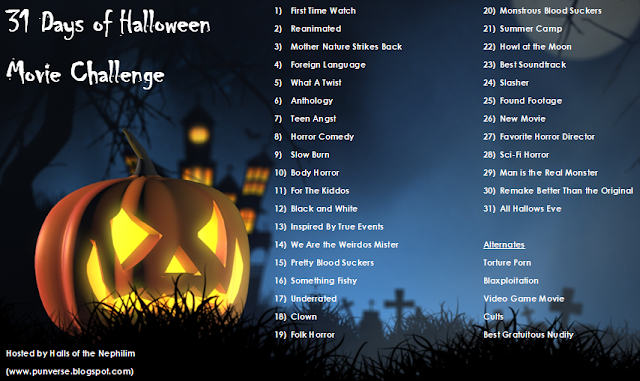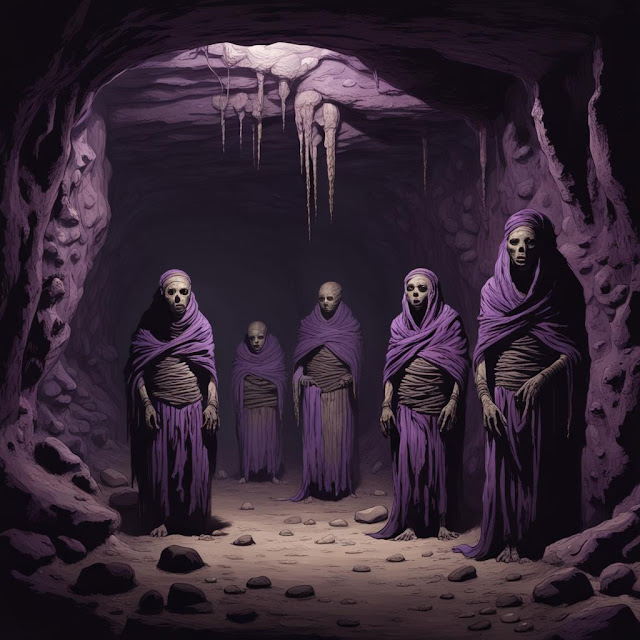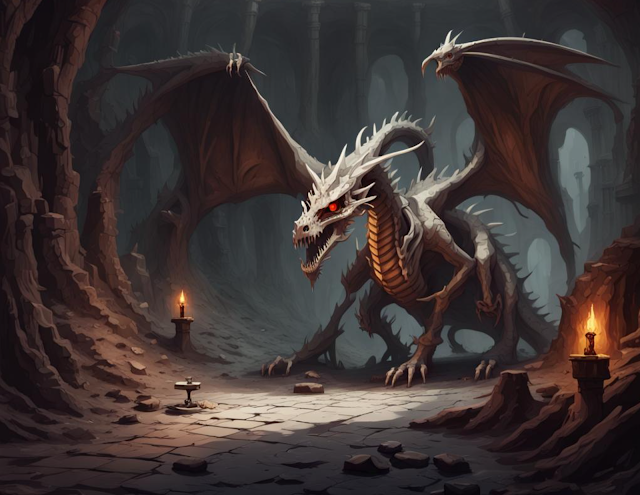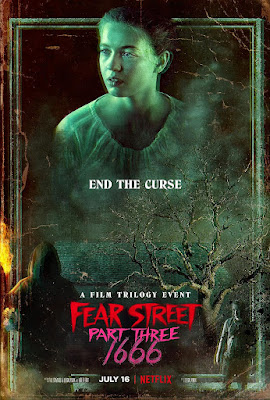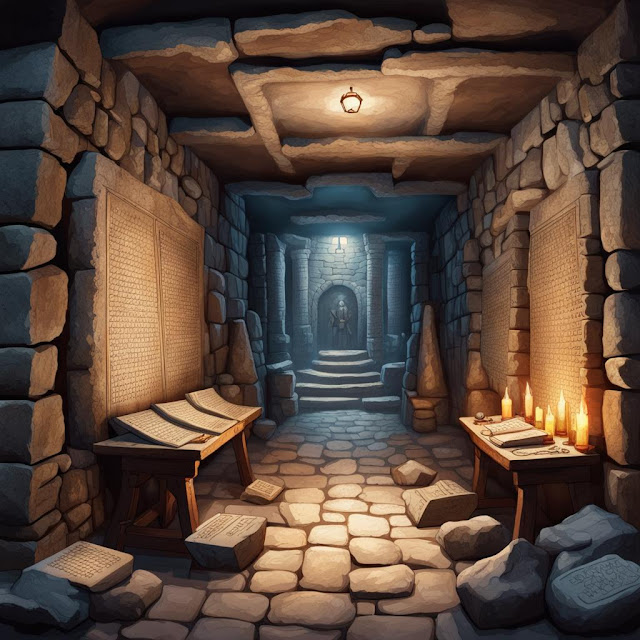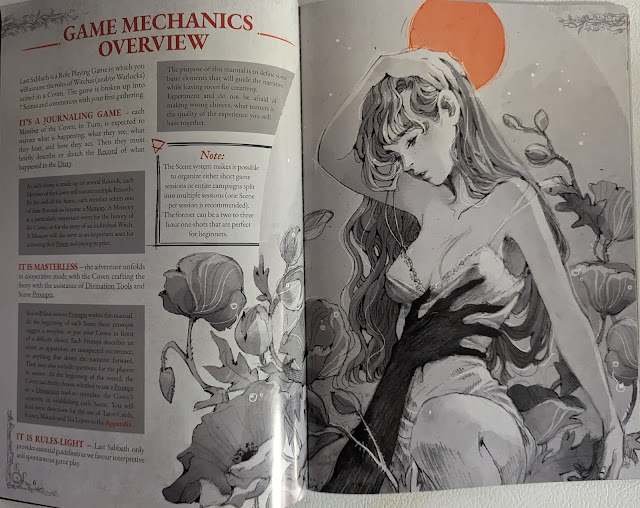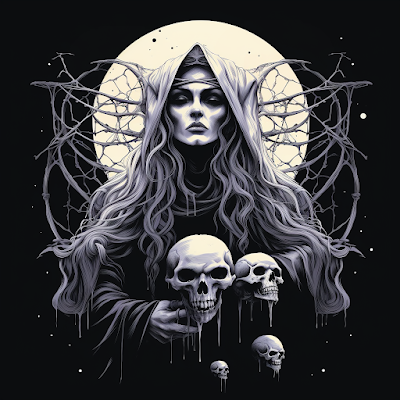Features / October 30, 2023

Photo: Teesside Gazette
Ever tried carving a turnip? Attempting to prise out chunks of the cold, iron-hard flesh is about as gratifying as it sounds, and yet, pumpkins still being an outré foreign exoticism in the crepuscular 1970s, turnips were what they gave us kids of the UK, when they gave us anything at all. The best you could hope for in terms of results was the kind of thing seen above in the hands of the kids posing in 1976 with Willie Maddren, football deity of the English North-East, and resembling prehistoric fetishes: frightening, certainly, but more in a literal than a playful way, which was more or less true of Halloween itself. The drab austerity of our Halloweens past is so axiomatic that it’s now cliché to hear boomers and Gen Xers incongruously united in bemoaning the fact that the nation’s youth no longer appreciate the joys of a day where nothing at all happened except whatever self-inflicted fear you could muster up to torment yourself with. The adulthood-defying Bacchanalia of the North American Halloween industry being denied us, we had to get our eerie thrills where we could, and that was as true of music as it was of non-root vegetable Jack-o’-lanterns and sexy nurse costumes. So read on to discover the ten songs that, despite having no actual connection to the 31st of October, yet produce a frisson of seasonal alarm in the paranormally persecuted inhabitants of Mutant Mansions.
 “Dear Diary”
By The Moody Blues
Deram, 1969
“Dear Diary”
By The Moody Blues
Deram, 1969
I think we all know who’s actually responsible for the children of Olde Englande historically not getting to enjoy the full throttle commercially-propelled joys of the 31st of October: the dickhead known as Charles Dickens, that’s who. By setting the Western world’s second favorite supernatural story at Christmas, he basically ensured that, until the twin forces of untrammeled kid-targeting capitalism and untrammeled middle-aged narcissism prevailed, the nation’s ghost industry was doomed to gravitate around the 25th of December, with sundry worthy M.R. James adaptations the order of the day. Until around the time Tony Blair managed to liberate the City of London of its pesky banking regulations, Halloween in England (other parts of the UK have their own traditions) was left to be just a vaguely worrying oddity where, though you could make a witch out of a plastic lemon if you liked, you were also guaranteed a depressing dearth of seasonal plastic tat and traumatizing TV programming.
But fear not, Britain’s Most Haunted Band (catchier than “band where all the songwriters seem deeply depressed”) The Moody Blues were on hand to provide eerie prog-rock-folk dirges year round that lent themselves to unnerving interpretation. “Dear Diary” is one of those dirges. It might have been all the Herbert van Thal anthologies I’d been mainlining since infancy, but somehow, perhaps due to an idiosyncratic interpretation of the line “For goodness sake, what’s happening to me?” or what I perceived as Lovecraftian undertones, I mistook the song’s existential critique of straight society for an eerie and beguiling ode to monstrous difference, an error that cast its lackadaisical groove, Ray Thomas’s melancholy flute, and the gurgling, vaguely amphibian effect on Justin Hayward’s vocals in a more sinister light. That
If they weren’t so blind, then surely they’d see
There’s a much better way for them to be
sounded less like a call to arms for the Brummie hippie lifestyle and more like an invitation to radical and frightening mutation. Listened to in autumn twilight, it still sounds like the final jottings of someone journaling their drift away from the human race.
—Richard McKenna
 “The Tale of the Giant Stone Eater”
By The Sensational Alex Harvey Band
Vertigo, 1975
“The Tale of the Giant Stone Eater”
By The Sensational Alex Harvey Band
Vertigo, 1975
A song doesn’t have to be about vampires, pumpkins or ghosts to inspire a spot of seasonal terror (nothing rhymes with vampires or pumpkins anyway, and “roasts” seldom inspires terror, unless you burn the Yorkshires). The swift and total devastation of the pristine and ancient in favor of the cheap thrills of modern convenience is a terrifying concept, but when I first heard “The Tale of the Giant Stone Eater“ by The Sensational Alex Harvey Band, I was five years old and the message went over my head. Nevertheless, the song terrified me profoundly.
It wasn’t the only sinister musical narrative with a cultish theme of death that I obsessed over as a child, but it was certainly the most chilling. I didn’t even like to look at the album cover (conceived as a parody of prog album artwork of the time), with its spiky earth movers and snarling but doomed dinosaurs. The lurid colors had the menace of classic horror comics, and rifling through my dad’s record collection to have another look at the starship on ELO’s Out Of The Blue meant risking touching the cursed album by mistake. I didn’t want the song to be aware of me, or perhaps to fly on to the record player by malign magic, and start playing itself. We were forbidden to touch the record player, and thus I would have been helpless to listen, and I was very determined to do that as little as possible.
If my dad put the album on (Tomorrow Belongs To Me), my brother and I would flee the room, often in tears. The song is written in the style of a fairytale, and so it felt somehow personal, as though the narrator was addressing me directly.
Gather round boys and girls and listen,
To the tale of the giant stone eater.
The opening piano notes were sly and insinuating. You could tell something terrible was about to go down, and sure enough the piano swiftly gave way to the inexorable pounding of heavy guitar chords, and the alliterative aggression of the lyrics:
Sudden savage shining soiled solid sanded
Steel shuddering shattering shoveling until the
Sabre toothed rooter roots the earth
It was heavy stuff. Definitely not in the league of the Beatrix Potter cassette we’d recorded rude words over.
Our dad is a terrifying geologist from Arbroath, so we ought to have been hardened to the psychic effect of Scotsmen ranting about rock stratas, but in hindsight perhaps that was part of the terror. For us, the song was a cross between an incomprehensible ghost story and getting bollocked by dad for failing to show sufficient interest in igneous rock on a family holiday. Sometimes you just wanted an ice cream and a go on the arcade machines, and in the context of the song, that made me Part Of The Problem.
The eater eats his fill and is not satisfied and
Roars and revs his mathematical rage
On the footprints of Vikings.
My brother and I definitely belonged to the camp of “Plastic space agents, selling candy floss contracts.” Perhaps Alex Harvey believed, like my dad, that candy floss would make a mess of the car. On the other hand, Harvey was inspired to write the song after seeing a bulldozer clearing ancient Scottish countryside to build a new motorway, so maybe he’d have appreciated the despoilment of our Ford station wagon via tiny sticky handprints, a constellation of careening concurrent calorific cavepainter complaint.
As a young fan of musical theater, I was drawn in by the storybook narrative and complex lyrics, as well as by the way the music constantly switched between lyrical, harsh, faux jaunty, and bombastic, the lulls and the peaks feeling like a tease and a threat. I usually tapped out about the time Alex Harvey repeats “TEN MILLION YEARS OLD!” in an increasingly unhinged bellow, but occasionally I’d be able to force myself to listen to the whole song. My fascination with it made it scarier to me, which I think is the case with all good horror. It stuck in my mind, and I’d find myself pondering the lyrics, which I took very literally. I concluded that as I was not made of stone, the stone eater would not want to eat me (even during the great stone shortage!), but it was possible it could chew up the land our house was on, reducing me and my family—and more importantly the dog and my My Little Ponies—to a pulp of shattered soil and human viscera.
On the whole, I preferred the mellow space swoop of ELO.
Of course, given today’s increasingly bleak environmental outlook and the rise of AI devastating the human component of various industries and arts, the lyrics are unsettling in a different way.
The eater eats again retches roars and vomits
His computerized future is bright with security
Headshrinkers analyze the unknown
Meanwhile another tree dies of shame
—J.E. Anckorn
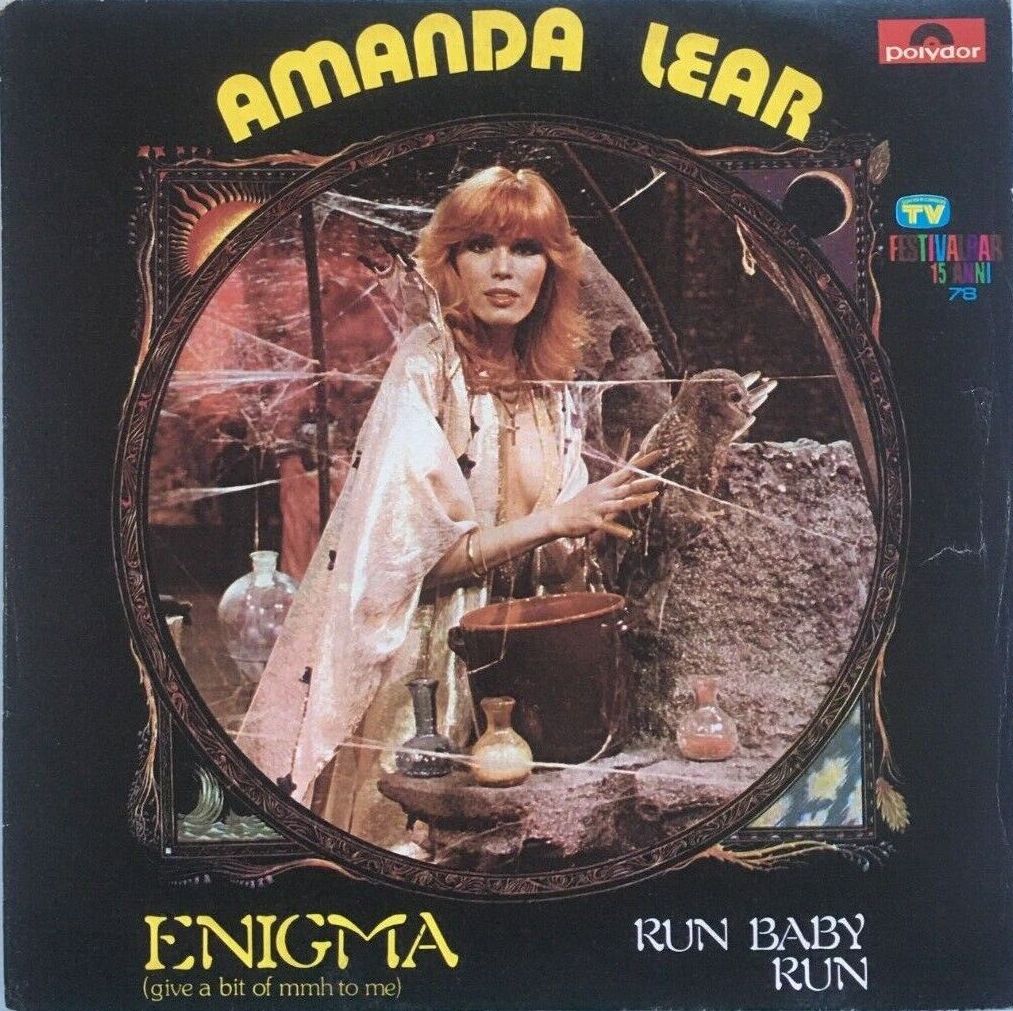 “Enigma”
By Amanda Lear
Ariola/Polydor, 1978
“Enigma”
By Amanda Lear
Ariola/Polydor, 1978
Italian kids of the late 1970s didn’t have Halloween. They only had a vague idea that it existed in America because of the “Grande cocomero” (the “big watermelon,” a.k.a. the Great Pumpkin) in Charles M. Schultz’s Peanuts strips, which had been translated into Italian since the ’60s by semiotician, writer, and cultural critic Umberto Eco. Eco was also responsible for the creation of the term “toffoletta” to describe a marshmallow to Italian readers who obviously had no idea what it could possibly be. When I saw Snoopy and friends roasting them on the campfire, I presumed “toffolette” must be delicious cubes of cheese.
So, no Halloween in the ’70s—but we did have (limited) access to a lot of spooky stuff all year round. We had those lurid giallo movie posters that plastered the walls of every Italian city, we had Dario Argento, we had Mario Bava’s horror films and Ruggero Deodato’s cannibal epics. Granted, most of us kids could only dream of actually watching them, but we were free to fantasize endlessly about their goriness. (I was 15 when I finally saw 1975’s Profondo Rosso, and it didn’t live up to my wild fantasies. I only learned to appreciate it much later.)
The most precious spooky thing we had was something American kids our age could only dream of: a sorcery-themed late night variety show called “Stryx” aired by the second channel of the Italian state TV from October 15 to November 19, 1978. Stryx was a sexy, all-singing, all-dancing extravaganza that in its brief life hosted witchcraft-inspired performances from international disco queen Grace Jones, Indian actress and singer-songwriter Asha Puthli, and Brazilian superstar Gal Costa. Eight-year-old me was allowed to stay up late to watch it even though the performers were half naked and the provocative dance numbers were not exactly kid-friendly. But Stryx was fun for the whole family and perfect Halloween viewing, even though there was no such thing as Halloween.
Actress, model, Dalí’s muse, Roxy Music cover girl, and international maid of mischief Amanda Lear was of course a family favorite and Stryx’s brightest star. She spoke fluent Italian and because of her deep, throaty voice, many Italians (encouraged by the “stampa rosa” gossip tabloids) were titillated by the idea she might be a trans woman. Lear was popular enough that in 1980 she appeared in a TV commercial for an Italian sparkling wine sold in individual aperitif bottles so small that the product was sold as “Nano ghiacciato,” which roughly translates as “dwarf on the rocks,” political correctness not being a priority in the Italian advertisement ecosystem at the time.
My favorite Amanda moment in Stryx was her performance of the song “Enigma.” Lear was led to the stage by a leash held by the ringmaster—actor, singer, and former ‘60s heartthrob Tony Renis. Her body shrouded in a black cloak, she looked like a witch being dragged to the gallows—yet enjoying every second of it. She soon disrobed, though, revealing a red sequined catsuit that was surely on Madonna’s mind when she was preparing her costumes for her Confessions on a Dance Floor Tour.
The song was naughty fun even if you didn’t speak English: “Give a bit of mmh to me and I’ll give a bit of mmh to you” she purred, while stroking three (terrified) black kittens on an inflatable plastic mattress intended to look futuristic and Barbarella-like, surrounded by half naked space odalisques and alien creatures unleashed from the Mos Eisley Cantina.
“Enigma” was a top ten hit in Italy and, more surprisingly, in Belgium.
—Daniele Cassandro
“We’re Gonna Change the World” By Matt Monro
Capitol Records, 1970
By Matt Monro
Capitol Records, 1970
It’s the stuff that catches you off guard in what you thought was a safe and secure environment that’s always the creepiest. Playing at home when I was young, my mum would invariably have the cheery, anodyne burble of BBC Radio 2 soundtracking her housework. Yet to my infant ears, there was often something a bit “off” about the songs it played, from themes of abandonment (i.e. John Denver’s “Leaving On A Jet Plane” and Middle Of The Road’s “Chirpy Chirpy Cheep Cheep” with its “Woke up this morning and my mama was gone”), to old men apparently preying on younger women (i.e. Ringo Starr’s “You’re Sixteen” and Charlie Rich’s “The Most Beautiful Girl”).
But the song that disturbed me the most was Matt Monro’s “We’re Gonna Change The World.” Listening now, it’s a brilliantly sung and arranged piece of “adult pop,” with an intriguing and multi-layered lyric about women’s lib. But at the time, all I heard was its eerily jaunty call for revolution: “Come with us, run with us! / We’re gonna change the world / You’ll be amazed, so full of praise / When we’ve rearranged your world / We’re gonna change your world!” With its groovy threats to overthrow the everyday, it felt more than a little terrifying—at the age of 6, I really didn’t want my world to be rearranged. It conjured visions in my head of hordes of protestors charging down the street with a gleam of madness in their eyes.
Kids are often portrayed as little anarchists in waiting, reveling in chaos and disorder. But this kid for one was pretty disturbed by the thought of everything suddenly changing overnight, the velvety tones of Monro’s voice and the tune’s upbeat penny whistle melody somehow only adding to the sense of dread it imprinted on my conservative soul.
—Joe Banks
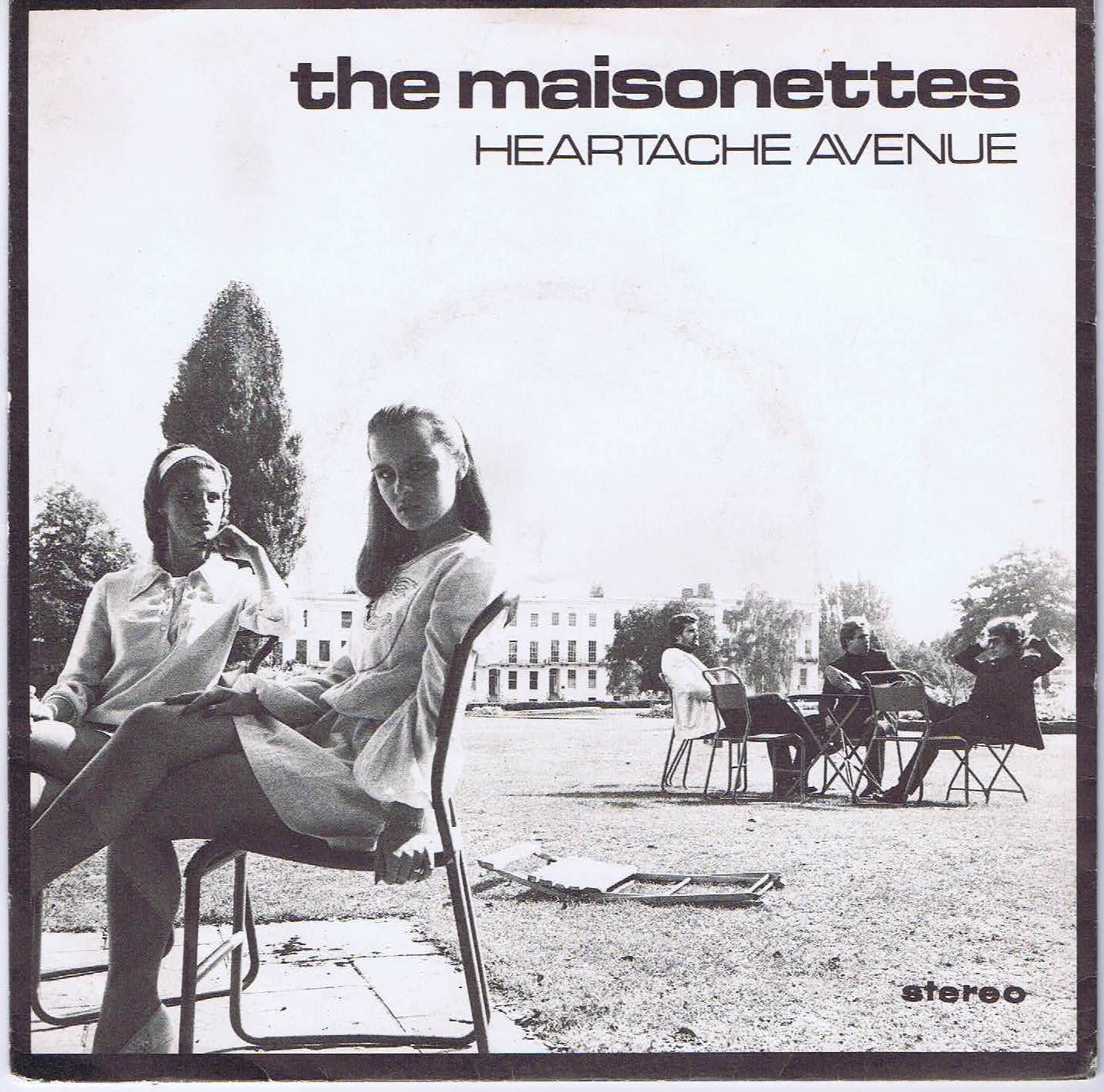 “Heartache Avenue”
By The Maisonettes
Ready Steady Go, 1982
“Heartache Avenue”
By The Maisonettes
Ready Steady Go, 1982
You might think that by age 11 a child would be mature enough to not be actually frightened by something as innocuous as the jaunty blue-eyed-soul of The Maisonettes “Heartache Avenue,” but that’s a stereotype I wish to smash. I claim my right to make myself constantly anxious with anything that comes to hand.
Never one for coping well with ambiguity or mixed messages, young me immediately took fright when the band first appeared on Top of the Pops. Perhaps it was the jacket and polo-neck combos, half enigmatic Mastermind miscreant, half provincial perv. Perhaps the strangely mechanical way lead singer and songwriter Lol Mason moved, as though obeying some obscure rite. Perhaps that his stylings vaguely evoked both the Yorkshire Ripper and Mr. Mann, the foot fetishist chiropodist doing cheap cash-in-hand home visits out of hours who for months had spent Tuesday evenings in our front room caressing my poor mum’s tormented feet (and, over a couple of weeks, slowly and agonizingly slicing a verruca out of one of mine) before departing under a cloud after his qualifications or intentions were called into question. Perhaps it was the ominous, oddly processed voices of the backing singers, or the downward synth slide that evoked a nauseating feeling of time slowing down. Perhaps the doomy cover photo on the single, half Last Year at Marienbad, half moment-before-nuclear-impact. I wasn’t even mad about avenues full stop, to be honest, the only one near my house being home to the caravan site where I’d been attacked by a scary Alsatian called Terry.
So as much as I liked the song, I couldn’t help feeling that it was in some way freighted with horror, Heartache Avenue no simple metaphor for lost love but an actual suburban nightmare zone where one might be trapped, like Doctor Who in Castrovalva. Given the appalled reaction my NHS glasses, Adric haircut, and fucked up teeth (it can’t have been my deeply irritating personality) provoked in any girl I spoke to, was I also doomed to inhabit this cursed liminal space? An awful feeling of dread that it might actually be my destiny flooded my brain every time I heard the brass section kick in at the start of the song.
I never saw The Maisonettes when they appeared on French TV, which feels like a stroke of luck, as the “Lions Club grandee trapped inside a video game set in a mountaintop cult sacrifice complex” would only have added yet another layer to the vague unease that “Heartache Avenue” triggers in me even now.
—Richard McKenna
 “Eve of Destruction”
By Barry McGuire
“Eve of Destruction”
By Barry McGuire
Dunhill/RCA Victor, 1965
In 1983 and 1984, I feel as though every night I went to bed singularly petrified of nuclear war. This, of course, was the era of The Day After, Testament, Red Dawn, WarGames, Ronald Reagan callously and dangerously joking around about starting the bombing in a matter of minutes, appearing before Evangelicals and calling the Soviet Union the Evil Empire. I wondered nearly every night if I’d wake up the next morning or simply be vaporized in my sleep—or, worse yet, maybe I would survive a nuclear exchange and be forced to watch as my family slowly perished from radiation poisoning. (Yeah, Testament really did do a fucking number on me.)
It was also right around this time that I really started becoming conscious of pop music, my own musical tastes, and my young self as an attentive, active, and appreciative listener of music. Sure, before I turned 8 there had been music on in the background, on pop and oldies radio in the family station wagon, but it was the coming of cable TV and MTV to our house that really kickstarted my awareness of the past 25 or so years of rock and roll and what was considered cool by millions of American teens a little older than me. My dad took me to local New England record stores like Strawberries and bought me 45s of Toto, Michael Jackson, Thomas Dolby. The family hi-fi was all mine; my folks, much to the dismay of my future-self-as-music-nut, were never really into putting together a record collection.
It’s this combination of new music and oldies radio that led me to two strikingly different anthems that tapped into my childhood nuclear war neuroses (the next one I’ll get to a little later in this feature). Barry McGuire’s 1965 Billboard number one hit (!)—despite numerous radio bans for its “subversive” lyrical content (!!)—protest anthem “Eve of Destruction” had to have been something I heard on oldies radio as a kid. I remember being transfixed by the song’s vaguely threatening aura, a mix of thoroughly pessimistic meditations on the Cold War, Vietnam, and domestic racial unrest. It was the second verse that put the chill down my spine: “If the button is pushed, there’s no runnin’ away / There’ll be no one to save with the world in a grave / Take a look around you, boy, it’s bound to scare you, boy.” And on some very conscious level at the time, I was aware this was an old song! One that was a hit when my parents were only a little older than I was! How long had this fear about instantaneous global nuclear war been going on, I asked myself! This was the kind of historical perspective that truly impactful music hits all of us with occasionally: an intergenerational connection that conveys the collective weight of history. I remember calling into the selfsame oldies station to request that they play the song. What the DJ in 1983 thought of an 8-year-old kid calling in with his mom’s help to hear a hoary ’60s protest song, I will likely never know. But man, am I curious.
—Michael Grasso
 “Angie Baby”
By Helen Reddy
Capitol Records, 1974
“Angie Baby”
By Helen Reddy
Capitol Records, 1974
By the time the ’80s rolled around, Britain had grudgingly accepted certain aspects of Halloween. We would sometimes sing spooky songs in school assembly, or color in a skeleton, but this wasn’t really any more attention than was paid to something like Harvest Festival (and I suspect horror fans would be more interested in the time we were taught how to make a corn dolly than anything we did for the 31st of October).
Pushback from the church led to rival “All-Saints” events where kids were encouraged to dress as saints instead, and which inevitably saw lines of girls dressed as St Trinians filing into church halls across the land in mini skirts and ripped fishnets. Parents in general weren’t especially worried about Satan, but there was still the lingering concern that sending your kids to demand sweeties with menaces from the neighbors might be considered bad manners.
All of this meant that I didn’t really have a Halloween tradition of child-friendly spooks to engage with, and I developed a range of slightly odd fears in their place, like the test card flying out of the TV into my face, or the red lines painted at the bottom of our local pool, which I thought were a grate with a shark behind it. That said, my spooky song was more connected to my creeping dread of approaching adulthood than those more visceral childhood terrors.
I first heard “Angie Baby” in the early ’90s on a compilation of ’70s number 1s my parents brought from a petrol station. The story is essentially about a weird kid negotiating her relationship with the opposite sex, and as an 11-year-old already dealing with the imposition of puberty, I kind of related. Trapping the souls of men inside your radio and letting them out occasionally to dance around your bedroom was less familiar to me, but you have to take representation where you can find it.
Back then, the involvement of the radio seemed like an intriguingly modern take on a ghost story (I had decided that Angie’s suitors must have become ghosts in order to fit inside), while their sorry plight and Angie’s isolation, confined to her room for some vague mental disorder variously described as being “insane” and “touched,” added all the poignancy of a good Victorian haunting. I misheard the line “All alone once more, Angie baby,” when her father knocks on the door, dispelling the spirits, as “Oh-oh once more, Angie baby,” the plaintive cry of a ghostly dance partner begging for one more turn around the room before being banished back to his portable prison. In my mind, the boys were like the mournful spirits of drowned sailors, and Angie was a more sex-positive Miss Havisham.
Angie gets the opportunity to put her magical radio into effect when a neighbor boy “with evil on his mind” sneaks into her room and offers to dance with her. I didn’t really understand at the time what sort of evil he was considering, and thought that probably he was going to bully her for dancing by herself, or perhaps he would pretend to take her seriously and then do a really silly dance and ruin it all. Part of me quite liked the idea of trapping boys inside a radio. Anything to do with growing up, in fact—bras, periods—they could all go in. And then I would simply slip the radio inside a storm drain and skip off into the sunset.
On the other hand, maybe Angie had also noticed that boys tended to be nicer if you talked to them one on one. Maybe she was just using her radio to get them away from their friends for a minute so she could find out what kind of person they were without them shouting or kicking footballs in her face. I could kind of see that. It had perhaps also occurred to me that having a sad ghost boyfriend would be pretty sweet.
Ultimately, though, I didn’t really approve of Angie’s methods, even if the neighbor boy was planning to ruin her romantic evening by doing a silly dance. Honoring Habeas Corpus is surely the bedrock of any relationship, and do you really deserve your sad ghost boyfriend if it was you that made him sad? I certainly had some thoughts about Angie Baby, but the secrets of interacting with boys remained as opaque and as terrifying as ever.
—Amy Mugglestone
“Walking in Your Footsteps” By The Police
A&M Records, 1983
By The Police
A&M Records, 1983
As I mentioned above, my parents didn’t have a huge record collection, but my grandmother was a completely different story. She was always ahead of her time, thinking differently, whether by her reading of purveyors of popular occultism and spiritualism such as Edgar Cayce in the bland American ’50s, her committed anti-war protesting as a middle-aged housewife during Vietnam, or her musical tastes, which eschewed the fusty big band and “beautiful music” sounds of her own Greatest Generation and found her grooving instead to Boomer rock and New Wave artists like Billy Joel, Elton John, and the Police.
My grandmother is the one who first put a copy of the Police’s 1983 international blockbuster hit LP Synchronicity into my hands. I remember listening to the whole album on her hi-fi in our family’s in-law apartment and being spooked by the tales of suburban middle-class dread (and lake cryptids!) in “Synchronicity II,” identifying far too much for an 8-year-old kid with the narrator of “King of Pain,” and having absolutely no clue about Sting’s pseud-y literary references to Carl Jung and Paul Bowles in “Synchronicity I” and “Tea in the Sahara,” respectively. (These days, in my dotage, forty years distant from the affectations of Gordon Sumner’s lyrics, I do admit I wonder how much of the album cover art’s veiled references to Jungian theory, surrealism, and psychic research laid the groundwork for later grown-up obsessions with same.)
It was track A2, “Walking In Your Footsteps,” that really got the hooks in me. Anchored by a “tribal” rhythm and melody, the synths and sequencer evoking pan pipes and hollow log percussion, Sting sings a paean to the vanished “brontosaurus,” wondering if his blind march to extinction has a lesson for us. I mean, come on: I was a kid of the ’80s, I loved dinosaurs and, if you mentioned them, I was definitely paying attention. But the twist came in the final verse, where I learned that we humans could easily follow in the friendly yet dimwitted dinos’ giant footsteps: “If we explode the atom bomb / Would they say that we were dumb?” I understood the irony and humor here in comparing us clever apes to the pea-brained dinosaurs, but did I fully understand how our intelligence could equally consign us to a Darwinian ash-heap? Again, thanks to previous exposure to media like Carl Sagan’s Cosmos, it was made clear to me “over and over and over again” (to reprise Barry McGuire’s haunting chorus) that technological intelligence was no guarantee of the survival of our species, and that in fact, it might be a detriment. “Walking In Your Footsteps” was the self-aware, wry, ironic dialectical counterpart to Barry McGuire’s defeated dirge of resignation, and I think on some level both of those songs contributed to my psychological attraction/repulsion complex with the idea of nuclear annihilation.
—Michael Grasso
 “Excerpt from ‘A Teenage Opera’”
By Keith West
Parlophone, 1967
“Excerpt from ‘A Teenage Opera’”
By Keith West
Parlophone, 1967
Halloween in the North-East of England in the late ’70s was a less garishly sexy festival than the one we’ve now grown accustomed to, and probably best characterized by the lingering odor of burnt turnip in drizzle. In truth, many of us were biding our time for November the Fifth, with its glamorous fireworks and massive municipal bonfires. Festive fact: it was actually illegal not to celebrate Bonfire Night in the UK for over 250 years, though how the men from the ministry enforced this remains mysterious. Anyway, whether cheerfully acknowledging the spirit world while dressed in a bin-bag, or gazing wistfully as the effigy of a Catholic conspirator was therapeutically consumed by the cleansing fires of The State, Samhain week contained two fun-sized opportunities for youngsters to contemplate Death. This locus of jocular creepiness is also inhabited by “Excerpt from ‘A Teenage Opera’,” which, it bears saying before we even get started, could easily be the most annoyingly punctuated song title of all time.
Originally released in 1967, I first heard it played in heavy rotation on ’70s radio request shows like Junior Choice, hosted by the avuncular Ed “Stewpot” Stewart, and one hosted by the considerably less wholesome Jimmy Savile. Written and performed by producer Mark Wirtz and fronted by Keith West (of psychedelic practitioners, Tomorrow), the single was conceived as being part of a larger body of work, the ‘Teenage Opera’ of the title. Apparently to be set in a turn-of-the-century village, each song was to tell the story of one of its inhabitants. Despite harboring the giddy potential of song titles like “Cellophane Mary-Jane” and “The Paranoiac Woodcutter,” the project was not initially completed.
Only the first single was a hit, and such was its ubiquity that it became more simply known as “Grocer Jack.” Though failing to make the US Hot 100, it was massive in the UK and Europe, especially in Germany, Belgium, and the Netherlands. And as masterful as the composition no doubt is (getting the thumbs-up from the likes of Paul McCartney and Pete Townsend), the real hook is the undeniably cute and catchy children’s chorus, as performed by some West London school-of-performing-arts-type kids.
The song begins with Mr. West describing how Grocer Jack, though 82 and suffering some kind of heart failure, is tortured by his sense of duty to deliver food to the village. The chorus, first time around, seems to be from Jack’s perspective as he’s dying on the floor: “Grocer Jack, get off your back / Go into town, don’t let them down.” As Jack correctly suspects, his value to the townsfolk is entirely contingent on his function as a retailer, and they are annoyed at his non-appearance: “Mothers send their children out / To Jack’s house to scream and shout.” This time the children sing the grocer-torturing chorus, exhorting the dying man to “get off his back.” Slacker.
After a pastoral interlude, it appears that Jack has definitively croaked. The townsfolk feel some pangs of conscience, and the children are baffled as to where their beloved grocer has now gone: “Grocer Jack, Grocer Jack / Is it true what mummy says / You won’t come back, oh no no,” and we’re left with the children of the town attempting to process the realities of death.
And so to my cozy late-’70s living room, where as the radio played I found myself also starting to wrestle with notions of mortality, and getting my first real tastes of The Fear, the surface cuteness of the chorus having served as a means to smuggle in much darker materials. Listening to this song was like turning over a stone to find something hideous underneath, but its morbidly sentimental aspects, creepy enough in their own way, were not the only reason I found it so terrifying. There was another, absurd as it now seems, which nevertheless scared the bejaysus out of eight-year-old me. Having recently been allowed to stay up late at my Nan’s, I’d watched the horror anthology film Tales from the Crypt (1972). One of the stories, “Poetic Justice,” starred Peter Cushing as Arthur Grimsdyke, an elderly dustman persecuted and eventually driven to suicide by his heartless neighbors. In a scene watched between terrified fingers, Grimsdyke returns from the grave exactly one year later to exact his revenge.
With the poor treatment of an elderly man who only meant well, some connection was made between Grimsdyke and Grocer Jack, as I wondered:
What if it isn’t true what mummy says?
Oh no no.
—Christopher Ashton
 “Revolution 9”
By The Beatles
Apple, 1968
“Revolution 9”
By The Beatles
Apple, 1968
The only “song” that ever scared me was “Revolution 9” from the Beatles’ White Album. A few of us were over at a friend’s house in the very early ‘80s and, this being the very early ‘80s, his parents were nowhere to be found. Naturally, we ransacked the place, ate an entire box of Ding Dongs, and eventually descended upon the record collection. Boy of the house Tom (not his real name) pulled out all of the Beatles records and regaled us with a short but succinctly gruesome version of the “Paul is Dead” urban legend: here was Paul, he said, pointing to the cover of 1969’s Abbey Road. He’s the guy with the cigarette. Notice Paul’s feet? Well, he has no shoes, and John, the guy in all white, he’s leading them all to Paul’s grave. “The other Beatles killed Paul, man.”
Now, I knew next to nothing about the Beatles at the time. I would have recognized a few songs from the radio, but, unlike Tom’s parents, mine were not ex-hippies—the closest thing we had to a Beatles record in my house was Chuck Mangione or Neil Diamond. To me, all of the Fab Four looked like fucking Charles Manson, and I knew they were British—a people whose accent and mannerisms I had early on pegged as supernaturally evil (possibly because of Peter Cushing’s Grand Moff Tarkin). So when Tom showed us the White Album and told us about this “weird song” that proved Paul was murdered, I was not only fully ensconced in the rabbit hole—I was sure that I, like Mr. McCartney, would remain buried there forever.
“You have to make the song go backwards,” Tom said. “Bullshit,” we said. “I’m serious,” Tom said. For all the kids out there, you have to understand that making a record play backwards was a manual process: you had to physically turn the record counterclockwise with your fingers, and you had to do it evenly and at a speed that came close to the 33 and 1/3 revolutions per minute a record spun when the machine was playing the right way. And we knew backwards was the wrong way, partly because of the increasingly disgruntled Evangelical Christian movement: these fine folks described rock ‘n’ roll as “a force accommodating demonic possession,” and claimed that subliminal “satanic messages” were deliberately being put in songs to control and pervert the minds of young people. Also, let’s not forget the still-lingering terrors of The Exorcist, where Linda Blair’s head spins around like a fucking record, and Father Karras figures out a demon is possessing poor Regan by recording her and playing the tape backwards. (I talk about the Beatles, Manson, The Exorcist, and how the Christian Right invented “satanic backmasking” here.) Basically, we were damned before the music even started.
“Revolution 9” is an avant-garde concoction of sound effects, dialogue snippets, and tape loops that Lennon described as “painting in sound a picture of revolution.” What do you think it sounds like in reverse? Yes, drugged-out bloody murder. When the words “revolution nine” are played backwards, you’re supposed to hear the secret message: “Turn me on, dead man. Turn me on, dead man. Turn me on, dead man.” What we heard was something a little different, a little more sinister: “Let me on, dead man. Let me on, dead man. Let me on, dead man.” Death was a train, we deduced, and the garbled screeches and haunted marching band and manic laughter were soundtracking a descent into hell. Or better yet, the train was chugging upwards, forwards, back to the light. But who was talking? Paul? The other Beatles? Or was it us, from the future, a warning from beyond the grave?
After that, Tom showed us the inner sleeve of the Eagles’ Hotel California, where, he said, you can see the devil himself peeking through a second story window. Fucking Tom, man. Miss him, miss him, miss him.
—K.E. Roberts
 Name: Trouble in PinewoodPublisher: Chaosium, Inc.
Name: Trouble in PinewoodPublisher: Chaosium, Inc.

 “Dear Diary”
“Dear Diary” “The Tale of the Giant Stone Eater”
“The Tale of the Giant Stone Eater” “Enigma”
“Enigma”
 “Heartache Avenue”
“Heartache Avenue” “Eve of Destruction”
“Eve of Destruction” “Angie Baby”
“Angie Baby”
 “Excerpt from ‘A Teenage Opera’”
“Excerpt from ‘A Teenage Opera’”




